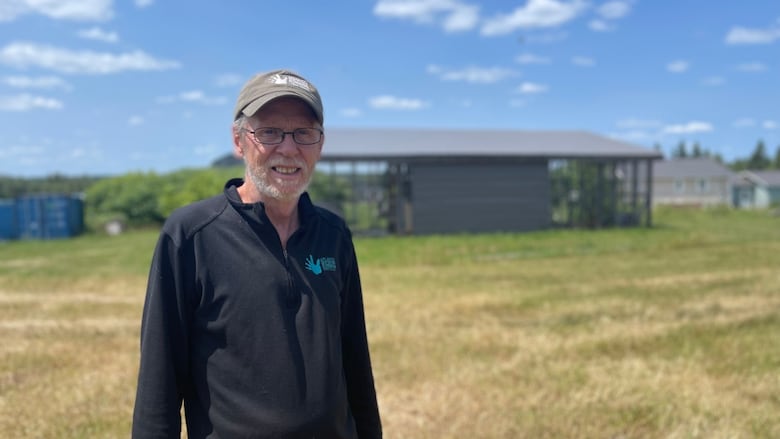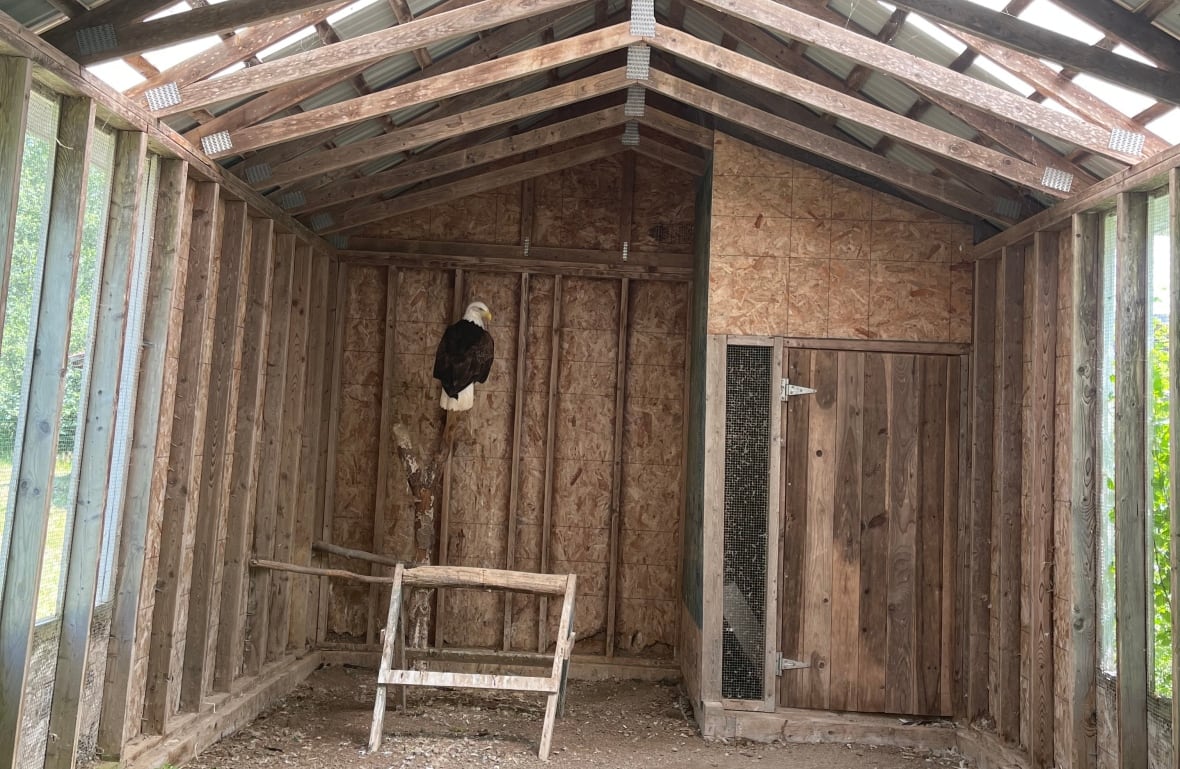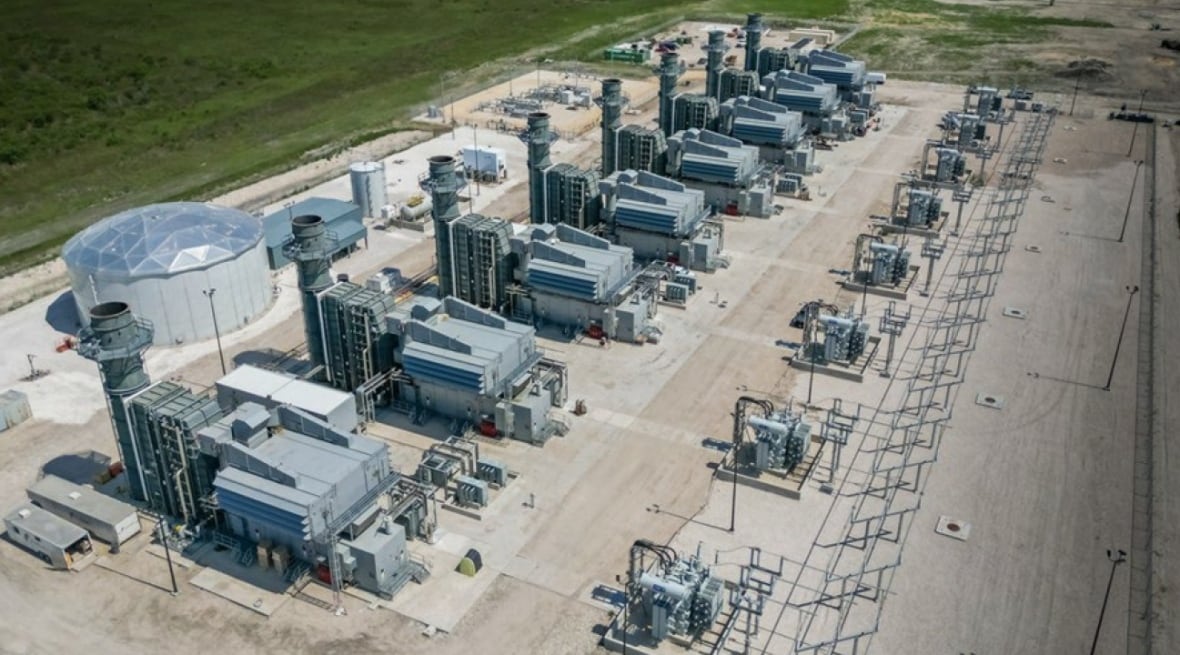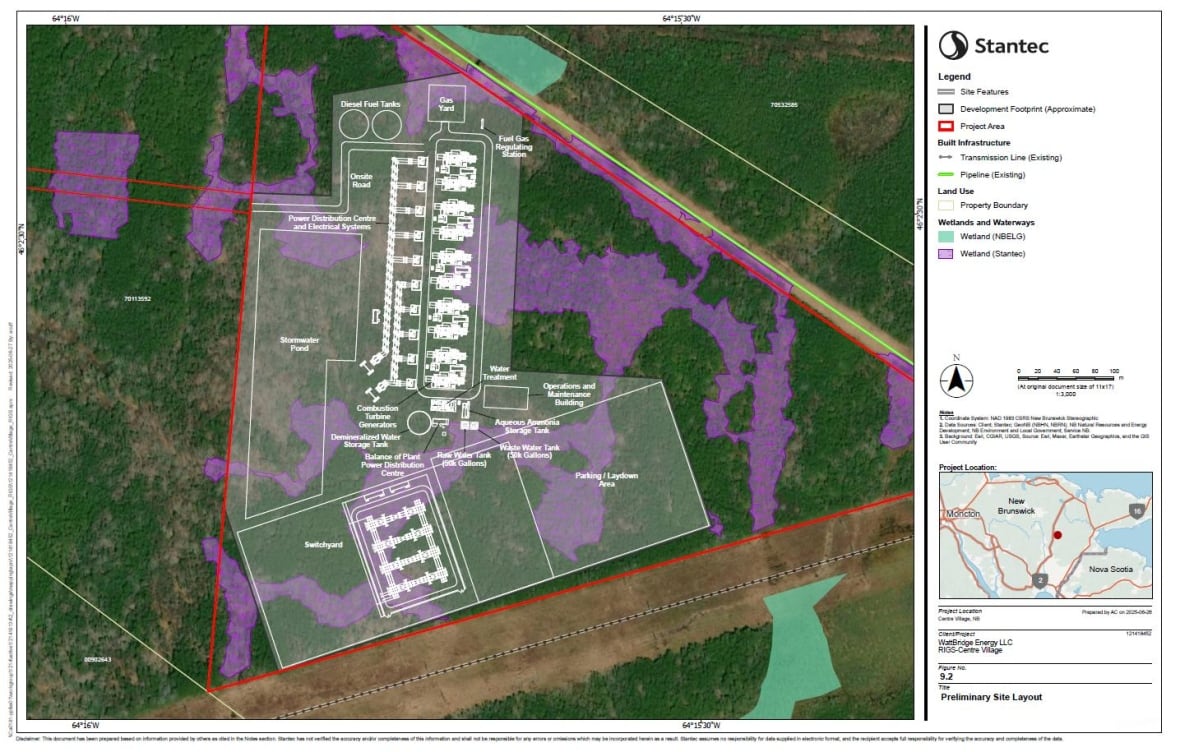Wildlife organization concerned about new neighbour — a natural gas plant
N.B. Power hopes to begin construction of a natural gas plant in 2026

A wildlife organization is worried about the potential environmental impact of N.B. Power's proposed natural gas plant in southeastern New Brunswick.
Barry Rothfuss, the executive director of the Atlantic Wildlife Institute, which provides emergency care to wildlife, said the plant in Centre Village would be only about four kilometres away.
"The animals that are brought here are already in sensitive positions and then we're gonna complicate that with, again, the pollutants and contaminants that are potentially going to be threatening the ability to do our work professionally," Rothfuss said.
More than 200 animals, including foxes, eagles, bears and turtles, are in rehabilitation on the institute's 120-acre property in Cookville.

The plant site is on the Chignecto Isthmus, the link between Nova Scotia and New Brunswick and made up of wetlands and forest.
It's also a high-traffic area for migrating species, including thousands of shorebirds.
Rothfuss and other residents didn't expect the area to be host to a natural gas plant, which was originally proposed for Scoudouc, near Shediac.
"I think it was a surprise to the entire community here," he said. "It sort of just threw us into a little bit of a panic."
The site is off Route 940 at the intersection of N.B. Power transmission lines and the Maritimes and Northeast natural gas pipeline.
The plant would draw from the natural gas pipeline to feed 10 turbines. It can also use ultra-low sulphur diesel as a backup fuel.
Rothfuss said the institute offers its services to companies with infrastructure threatening to wildlife.
"I've never worked with any industry of this type that doesn't have significant environmental problems associated with it," Rothfuss said.
He expects "air, water and soil issues in every phase" of the project. He's now unsure if it's safe to continue experiential learning to post-secondary students and children's wildlife camps.
The project's environmental impact assessment said all phases of the project "will generate air contaminant and greenhouse gas emissions." It also anticipates effects on the quality and quantity of ground and surface water.

N.B. Power has said it wants to meet growing power demand while reducing the province's net greenhouse gas emissions by 250,000 tonnes a year. The plant would also provide backup power for wind and solar energy when they're not generating.
The plant would still produce greenhouse gas emissions of about 900,000 tonnes a year as a worst case scenario and 100,000 tonnes as the expected case scenario, according to N.B. Power and U.S.-based ProEnergy, the company that would build and operate the plant.
Emergency response anticipated
In 2013, around 7,500 migrating songbirds died overnight when they flew into and around a Saint John liquefied natural gas plant's flare. Rothfuss responded to that incident and said the birds weren't incinerated in that case. They were knocked unconscious by the fumes and died on impact with the ground.
"These generators are emitting the same type of emission that we were dealing with there in a major fly zone through our region. It doesn't make a lot of sense."
Canaport LNG ended up pleading guilty to federal charges under the Migratory Birds and Species at Risk Act.
Rothfuss would like to have a role in discussions, so he can at least anticipate how to respond to potential wildlife emergencies.
"What we're trying to do is be in the protective mode, get out in front of this and not having to respond to it and what we're being forced into here is a really responsive mode for something that we know is going to happen."
The project's initial description shows the infrastructure would be set on top of a wetland. N.B. Power spokesperson Elizabeth Fraser said in an email that the Centre Village site "offers the best opportunity for timely project delivery and cost savings over other potential locations."
'Important wildlife corridor'
Melanie Jellett, the conservation co-ordinator with the New Brunswick chapter of the Canadian Parks and Wilderness Society, calls the isthmus "an important wildlife corridor."
"The site of the proposed gas plant is really at the heart of the Chignecto Isthmus. It's where moose, where bear, where lynx flow. So we're very concerned about the location."
In 2016, the Nature Conservancy of Canada studied the migratory path of wildlife through the Chignecto Isthmus and created a model of how animals travel.
According to its projections, the natural gas plant site would sit in the middle of the path.
The isthmus is already feeling the effects of rising sea levels and severe weather. The system of dikes, some centuries old, protects the area from the Bay of Fundy. But improvements are needed that would cost an estimated $650 million.
Not the only site
N.B. Power hopes to break ground in 2026 and generate power by the third quarter of 2028.
The project is under review by the Impact Assessment Agency of Canada, which considers the environmental impact of projects.
During an information session hosted by the agency, John MacIsaac, the president of ProEnergy Canada, said more than five sites were considered.
He said mapping was done and environmental impacts were considered "that positioned Centre Village ahead of Scoudouc."
ProEnergy declined an interview regarding the change in site location.
Spokesperson Chris Evans said in an email that the site was selected because of its minimal impact, proximity to existing electric and natural gas infrastructure, its lack of fish habitat and its low archeological potential.
In another email, Evans wrote, "we anticipate minimal impact, and we are doing everything we can to ensure that."

N.B. Power didn't respond to a request to provide a list of the alternate sites.
The Impact Assessment Agency is accepting public comments online until Aug. 13.
Public open houses are also scheduled for Aug. 12 at the Sackville Music Barn at 4 p.m. and Aug. 13 at the Tantramar Veterans Memorial Civic Centre at 4 p.m.


